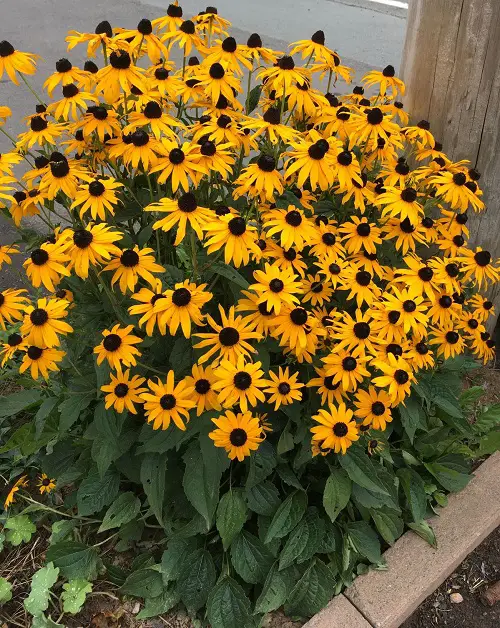Missed planting your favorite flowers in spring? Don’t worry–here’s a list of flowers you can plant even in late summer, including July.
Many plants prefer being sown in spring, when the weather is just right. But if you missed that window, there’s good news. This article provides a list of flowering plants that can handle the heat.
These late-summer and fall bloomers can still liven up your garden, even if planted in July. So what are you waiting for? Grab your tools and get planting under the bright sun!
Late Summer Flowers You Can Still Plant in July
Note: This list includes perennials and annuals of various growing habits, climates, and sizes, offering a wide range of choices to meet your needs.
1. Marigold
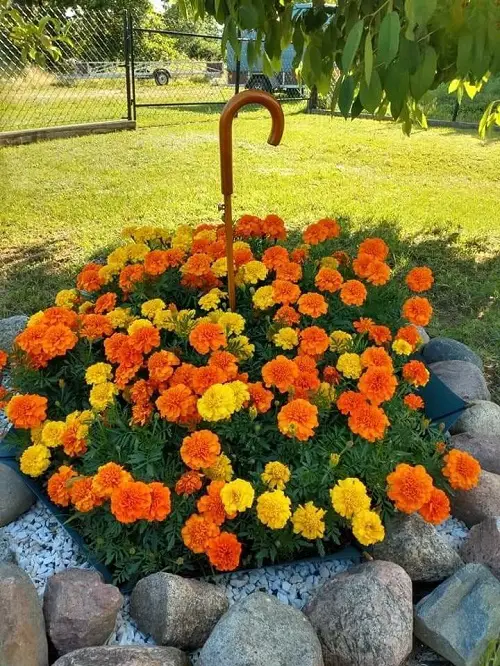
Botanical Name: Tagetes
USDA Zones: 2-11
Marigolds are the perfect flowers to plant in the hottest months of the year, even in July, as this plant germinates and blooms quickly throughout summer and even into fall. They don’t mind drought-like conditions and thrive in partial to full sunlight.
Planting them late in the summer will not take away from their iconic floral beauty. They will still grace your garden with adorable orange, yellow, and gold pom-pom-like blooms.
Along with their visual appeal, they also keep pests away due to their strong scent, making them a wise choice to grow as companion plants in the vegetable garden.
Note: Try watering early in the morning to prevent heat stress and maximise absorption.
2. Sunflower
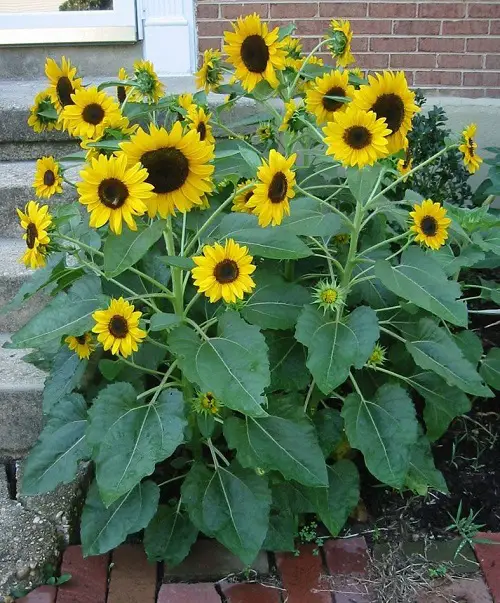
Botanical Name: Helianthus annuus
USDA Zones: 2-11
The name says it all! It is no surprise that sunflowers love full sun; therefore, they do quite well in the long daylight hours of July. To combat the hot sun, ensure that these plants are sown in moist soil.
With their large, yellow petals and dark brown centers, these tall perennials are hard to miss and also make a good source of food for birds or other pollinators, increasing the biodiversity in your garden!
Did you know that these flowers actually follow the path of the sun (heliotropism)?
Pro Tip: Since common sunflowers can often tower over 10 feet in height, you can try growing compact dwarf varieties instead. Grow them this way!
3. Zinnia
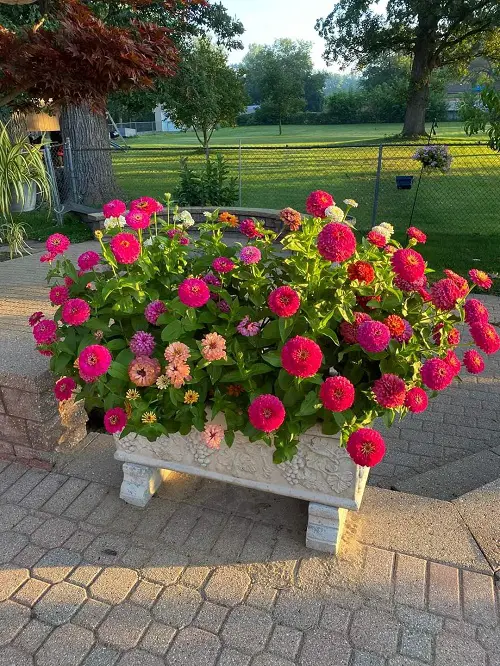
Botanical Name: Zinnia elegans
USDA Zones: 2-11
Originating in Mexico, Zinnias thrive in warm soil, and are a great go-to summer flower that even blooms till fall if deadheaded properly! All they need is full sun, loam or soil with high organic matter, and voila, they’ll be growing in no time!
Zinnias come in lots of colors like pink, red, orange, and white that attract tons of pollinators like bees, butterflies, and birds, but their taste keeps deer away.
They are naturally resistant to heat and humidity, but only if given enough room for air circulation. In cramped spaces, they are prone to fungal leaf diseases.
4. Cosmos
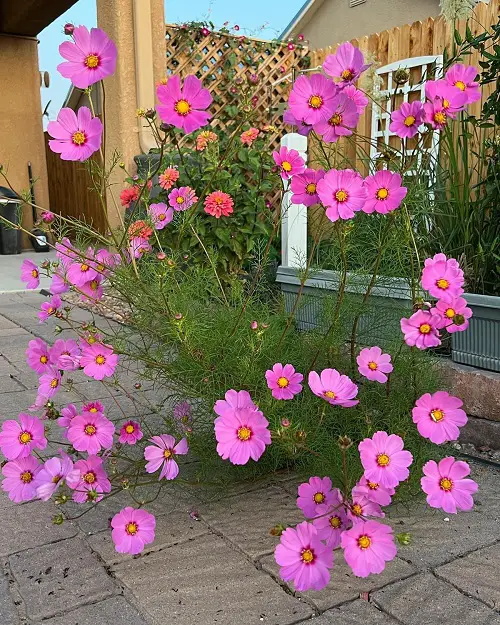
Botanical Name: Cosmos bipinnatus
USDA Zones: 2-11
Get ready for a bunch of compliments if you grow cosmos in your garden, even in late summer. It is a good option for last-minute summer gardening as these ornamental flowers grow quickly (germinate in 7-21 days) and love hot, dry conditions. In fact, the best time to sow them is when the soil is warmed up to 65°F (18°C).
Their star-like flowers are really pretty due to their bright pink, white, and purple colorations. Most varieties even reach 4 feet in length, making them a natural garden divider. But keep in mind, taller varieties may also need stalking to provide stability.
5. Black-eyed Susan
Botanical Name: Rudbeckia hirta
USDA Zones: 3-8
Black-eyed Susans are a competitor to the sunflower, not only in appearance but also in growth timing and requirements. These short-lived perennials are usually planted in spring, but due to their hardy nature, you can push that to late summer in moderately warm regions.
Once mature, their golden-yellow petals circle a dark brown center and are a sight to see! But remember, despite loving the sun, they need cool roots, so moist soil conditions and even afternoon sun protection are a must.
Pro Tip: Mulch the base of the plant to preserve moisture and prevent heat stress on the roots.
6. Nasturtium
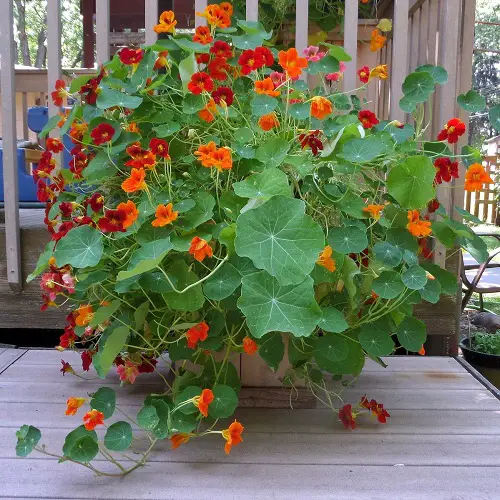
Botanical Name: Tropaeolum majus
USDA Zones: 2-11
Want a plant to provide beautiful blooms for multiple summer seasons? Look no further than Nasturtiums! Not only are they great for planting in July, but they are also self-seeding annuals, which means they’ll perish after a growing season but come back again when the conditions are favorable!
These warm-weather plants can tolerate heat, drought, and even neglect. But sometimes need protection from the afternoon sun. You can spot them due to their long stems, parasol-like leaves, and spurred, 5-petaled, funnel-shaped flowers.
Note: It is better to soak the seeds overnight prior to sowing as this helps soften their cover for easy germination.
7. Coreopsis
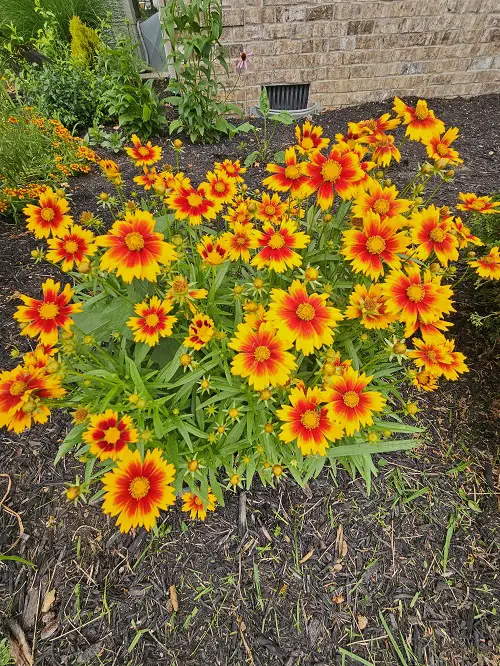
Botanical Name: Coreopsis tinctoria
USDA Zones: 2-11
Do you have a garden that has poor soil and are looking for a flowering plant that will grow regardless? Coreopsis is the plant to go to! This wildflower can be planted in the July heat in infertile soil and still bloom quickly.
It has small yellow flowers with brown-red centers, but you won’t miss them as they grow in close proximity on tall, thin stems. You don’t need to water it much, fertilize it, or even protect it from wild grazers.
But the one thing you must do is deadhead the spent flowers to extend the blooming season and prevent uncontrolled seeding.
8. Globe Amaranth
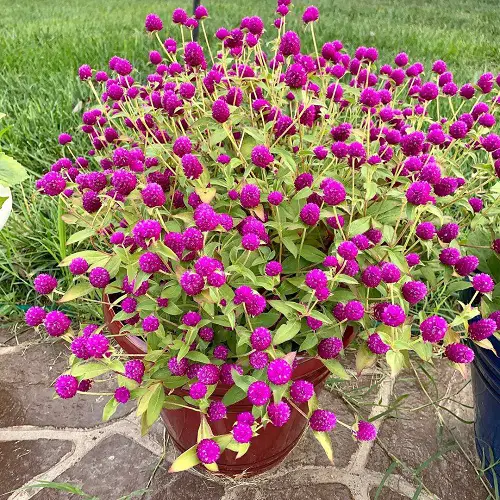
Botanical Name: Gomphrena globosa
USDA Zones: 2-11
If you want unique-shaped colorful blooms from late summer to spring, plant the Globe Amaranth in July. You can start the planting process indoors and transplant them into a garden later on for maximum survival percentage.
The seeds will germinate in as little as 7 days and soon grow large enough to produce the iconic ball flowers. Did you know that these plants make excellent dried arrangements because their color doesn’t fade even after cutting?
9. Four O’Clocks
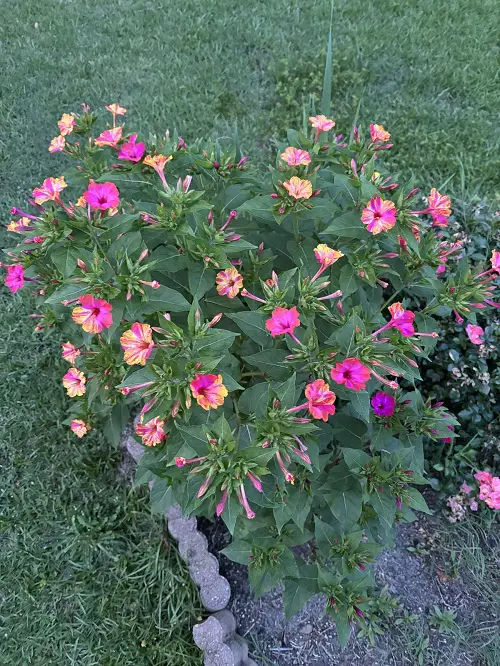
Botanical Name: Mirabilis jalapa
USDA Zones: 9-10
Boasting an unusual name like Four O’Clocks, these deciduous, semi-woody perennials are perfect for late summer planting. They require full sun and moist to occasionally wet, humus-rich soil for optimal growth.
The brightly-colored trumpet-shaped flowers are known not only for their looks but also soothing fragrance. Did you know that they’re called “Four O’Clocks” because they open in the late afternoon to early evening time and are then pollinated by nocturnal insects!
They attract moths and night pollinators, adding life to your garden after sundown.
10. Blanket Flower
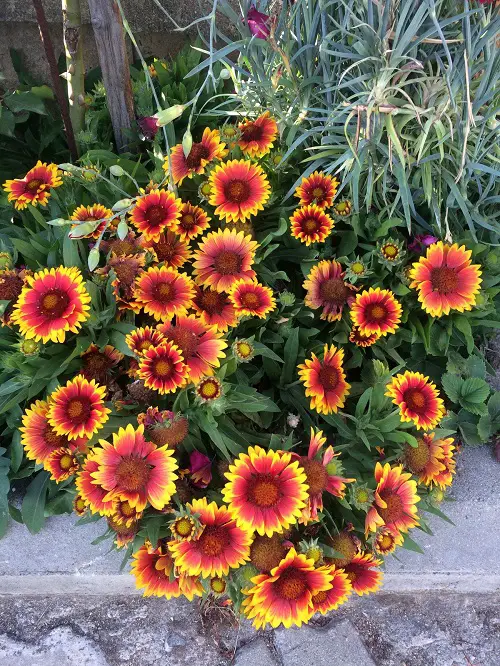
Botanical Name: Gaillardia pulchella
USDA Zones: 3-10
The Blanket Flower will cover the garden with vivid blooms if planted late in the summer. This plant rarely crosses a foot and a half in height but is hard to miss because of its yellow and red flowers. Another reason to plant this flower around July is that in cool climates it has the lifespan of an annual, while in warm areas it can extend its life.
These plants are almost invincible as they are resistant to drought, salt, and heat once established. However, for the best germination of seeds, you will need to provide constant moisture.
Note: This plant hates wet feet. You must be very careful while watering and only do so sparingly or when the soil feels dry to the touch.
11. Cleome
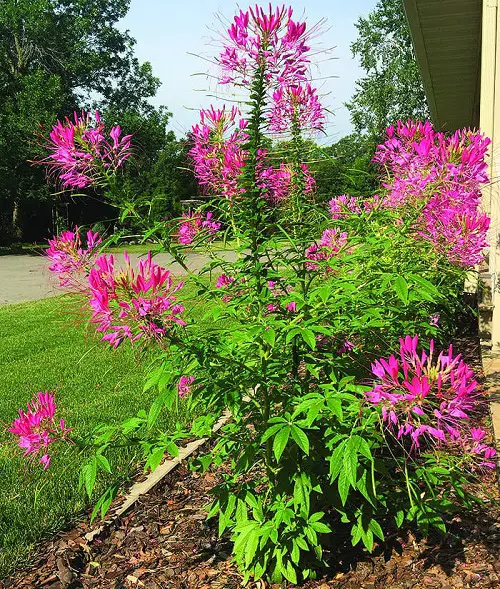
Botanical Name: Cleome hassleriana
USDA Zones: 10-11
Cleomes are lovely plants that can still be planted in July because they handle hot weather well and grow relatively quickly. They get their unusual appearance due to their spidery flowers and are also known as spider flowers.
Try growing it amongst short plants, as the stems of Cleome are quite bare and unappealing to look at. It will re-seed freely, but usually does not invade other parts of the garden rapidly.
Note: The spider-like flowers have an unpleasant musky fragrance, so it’s best to plant them a bit far from your home or seating area.
Late summer doesn’t mean it’s too late to grow something beautiful. With the right flowers, your garden can stay colorful, lively, and pollinator-friendly well into the fall. Happy planting!


